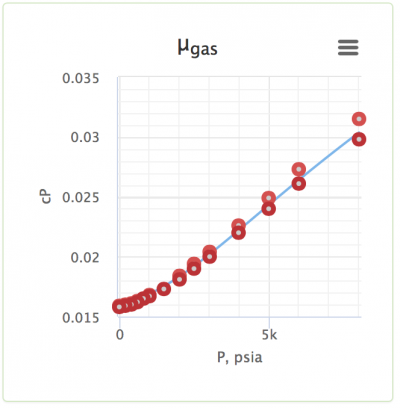Difference between revisions of "Lee correlation"
From wiki.pengtools.com
(→References) |
|||
| Line 37: | Line 37: | ||
:<math> z </math> = gas compressibility factor, dimensionless | :<math> z </math> = gas compressibility factor, dimensionless | ||
| − | + | == References == | |
<references> | <references> | ||
<ref name=Lee>{{cite journal | <ref name=Lee>{{cite journal | ||
Latest revision as of 11:56, 5 October 2020
Contents
Lee gas viscosity correlation
Lee correlation is the empirical correlation for the gas viscosity published in 1966.
Math & Physics
where
Application range
Nomenclature
 = gas density, g/cm3
= gas density, g/cm3 = gas viscosity, cp
= gas viscosity, cp = gas molecular weight, dimensionless
= gas molecular weight, dimensionless = pressure, psia
= pressure, psia = gas specific gravity, dimensionless
= gas specific gravity, dimensionless = temperature, °R
= temperature, °R = gas compressibility factor, dimensionless
= gas compressibility factor, dimensionless
References
- ↑ Lee, A. B.; Gonzalez, M. H.; Eakin, B. E. (1966). "The Viscosity of Natural Gases". Journal of Petroleum Technology (SPE-1340-PA).









